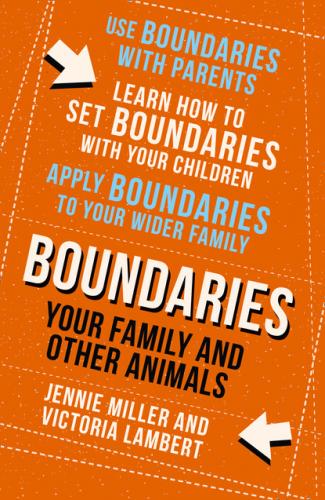‘Family not only need to consist of merely those whom we share blood, but also for those whom we’d give blood.’
CHARLES DICKENS
Our common fantasy family life draws on inspiration from those loving, yet chaotic groups in fiction like The Waltons, Modern Family, or even The Munsters. Who doesn’t hark occasionally back to life in Happy Days? Reality is rarely that simple though.
In Step Four, we are going to look at family members in four sections: Parents/Elders; Children; Adolescents; and Siblings and Blended Families. You may find it helpful to start with the Parents section, even if your most obvious point of conflict is with a child or brother, as many of our patterns begin with ‘Mum’ and ‘Dad’.
A family group needs boundaries just like the relationships we create through work or romance. But families come with some relationships ready-made – i.e. the one between your parents, that between siblings, etc. And they come with attitudes that have an impact which may be beyond anyone’s control. Plus, the stakes can be higher, thanks to cultural pressures.
The trouble with this fantasy idea – the dream of the perfect family as a necessary goal for everyone – is that it affects your ability to build the very boundaries which could make it more real. Our need for a fantasy family weakens our ability to create a real one.
And it can feel artificial to control your boundaries with your family rather than letting them evolve ‘naturally’, but healthy boundaries will take you much closer to your dream of a happy family than relying on past behaviour or hoping for the best.
Families are not natural organisms that will automatically develop into the best shape for all participants. The family as we know it is very much an artificial construct based around tradition, fiction and masses of hope. So, at any point be aware that your biology does not need you to be in a family unit. It is just as ‘natural’ to be independent from some or all of your family as it is to be that nuclear image of the Modern Family, where everyone gets along somehow and meets for lunch on high days and holidays.
What we will do in this step is explore how boundaries can improve relationships between family members – whether you choose to stay in a large Waltons-type community, a 2+2, prefer a more solitary experience with occasional Christmas cards and FB postings, or complete self-sequestration. Understand that it is OK to live any way and boundaries will help you achieve this.
Let’s stop and think how difficult this will be. We know boundaries in families may be the most awkward to tackle; that’s why we’ve left them until you’ve had a bit of practice on yourself and less established relationships first.
Hopefully you will be more boundary-fit, having learnt a few skills and developed them in a more neutral setting. Take a moment to think of an occasion when you have used a boundary (or even just thought of one) since you began reading this step. Make a note of it in your Learning Journal.
Note that you are still reading this book. Well done on having a clear desire to address your boundaries, even if that desire is a very quiet or indeterminate voice at present. We’re not expecting all readers to be boundary-ready at once; you may not even see the full benefit for some months after you put this book down.
Конец ознакомительного фрагмента.
Текст предоставлен ООО «ЛитРес».
Прочитайте эту книгу целиком, купив полную легальную версию на ЛитРес.
Безопасно оплатить книгу можно банковской картой Visa, MasterCard, Maestro, со счета мобильного телефона, с платежного терминала, в салоне МТС или Связной, через PayPal, WebMoney, Яндекс.Деньги, QIWI Кошелек, бонусными картами или другим удобным Вам способом.
